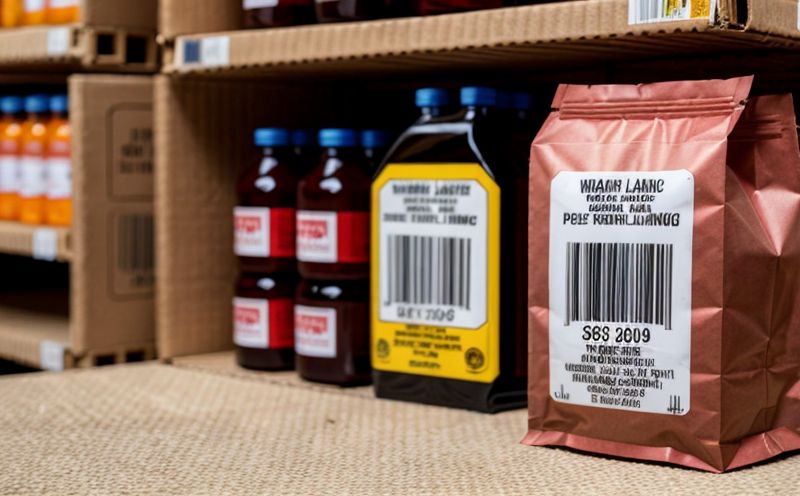Household Cleaning Resistance of Labels on Packaging
The durability and longevity of labels printed on packaging are critical in ensuring product safety, compliance with regulations, and consumer trust. In the toy sector, where children’s health and well-being are paramount, it is especially important to ensure that labels remain intact even after exposure to household cleaning products. This service focuses specifically on assessing how resistant labels are to common household cleaners such as detergents, soaps, and disinfectants.
Our testing methods follow international standards like ISO 12034 for the evaluation of resistance against chemicals. The process involves exposing labeled samples to various cleaning agents under controlled conditions to simulate real-world scenarios. We then evaluate any changes in label appearance or function after exposure, ensuring compliance with relevant safety and quality assurance regulations.
This testing is crucial not only for toy manufacturers but also for companies involved in packaging design and production. By understanding how labels perform under these conditions, businesses can make informed decisions about material selection, printing methods, and formulation of cleaning products to enhance overall product performance and safety.
For instance, certain solvents used in detergents might have a higher risk of dissolving or damaging specific types of ink. Our expertise allows us to identify these risks early on, helping clients avoid potential issues down the line. Additionally, this service supports compliance with regulatory requirements such as the Toy Safety Directive (EU) No 2009/48/EC which mandates that all toys must be safe and not contain harmful substances.
Our testing methodology includes preparing samples by adhering labels to different types of substrates commonly used in toy packaging, including cardboard, plastic, and paper. These samples are then subjected to various cleaning procedures using typical household products at varying temperatures and durations. After the test period, we visually inspect the labels for any signs of degradation or loss of adhesion.
Instrumentation plays a vital role in this process; our facilities utilize advanced equipment capable of simulating actual environmental conditions as closely as possible. This includes temperature chambers that can mimic hot and cold climates, humidity control units to replicate varying levels of moisture, and automated systems for consistent application of cleaning solutions.
The results from these tests are meticulously documented and presented in comprehensive reports detailing each step of the process along with findings. These insights enable companies to refine their product designs knowing exactly what conditions labels can withstand without compromising on quality or safety standards.
Scope and Methodology
- Sample Preparation: Labels are adhered onto various substrates (cardboard, plastic, paper) used in toy packaging.
- Cleaning Procedures: Samples undergo exposure to common household cleaning agents like detergents and soaps.
- Evaluation Criteria: Visual inspection for signs of label degradation or loss of adhesion post-exposure.
Industry Applications
This service is particularly beneficial for toy manufacturers, ensuring that their products meet stringent safety and regulatory standards. By identifying potential risks early on, companies can optimize their design processes to create safer toys while maintaining high-quality labels.
It also benefits packaging designers who need assurance that the materials they choose will hold up under typical household cleaning conditions. Furthermore, this service aids in meeting international toy safety directives by providing robust evidence of label durability and compliance with relevant standards.
Quality and Reliability Assurance
To ensure the highest level of quality and reliability, we adhere to strict protocols throughout every stage of our testing process. Here are some key measures:
- Standard Compliance: Testing adheres to international standards like ISO 12034 for evaluating resistance against chemicals.
- Consistent Conditions: Controlled environmental factors ensure consistent results across all tests.
- Automated Systems: Advanced instrumentation provides precise and repeatable testing conditions.





